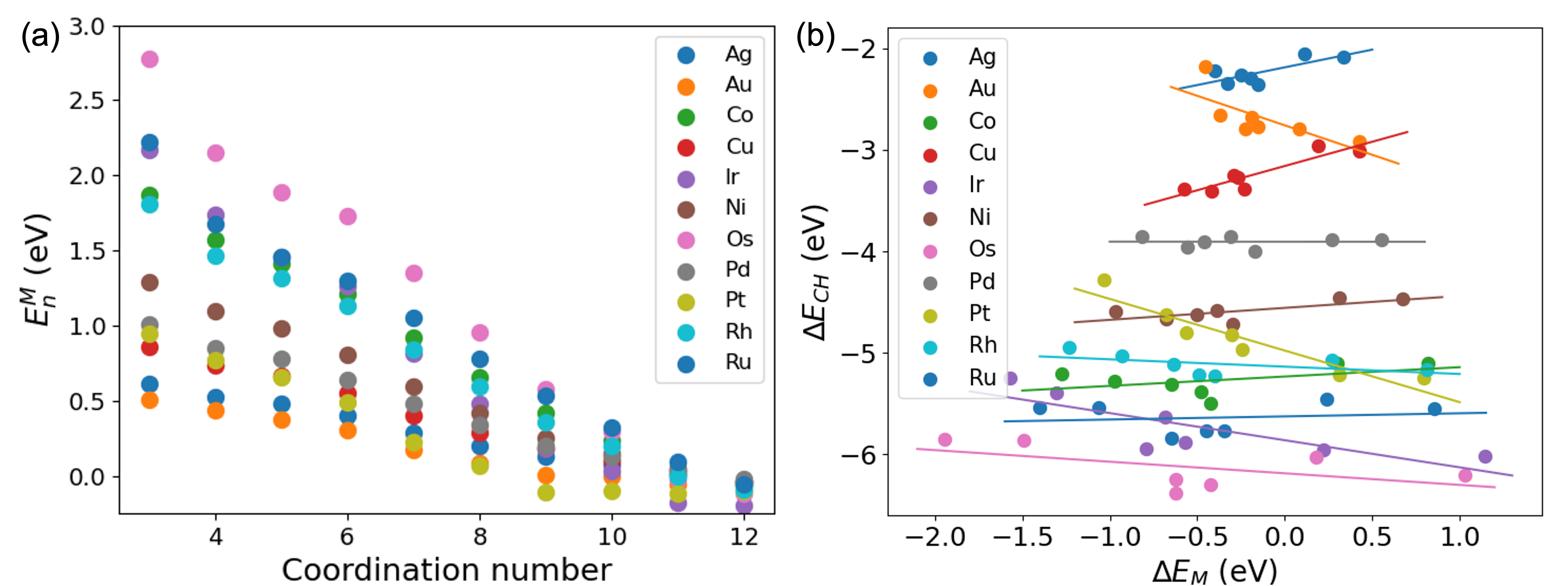2023 AIChE Annual Meeting
(84i) Expanding the Adsorbate Binding Energy Correlation from Pt Surface Site Stabilities to the Surface Site Stabilities of Other Metals
The dehydrogenation of hydrocarbons is a complicated reaction with many reaction steps. Therefore, establishing correlations among different metals can help accelerate the discovery of efficient and cost-effective catalysts. Our α-scheme, coordination-based model can effectively and precisely predict metal binding energies (ÎEM) with high efficiency. Additionally, we have categorized different hydrocarbon-based adsorbates according to their binding energies and surface site stability on various Pt surfaces. Furthermore, all the classes are linearly associated with adsorbate CH and it can be used as a descriptor. In this study, we have examined a range of metals, including Ag, Au, Co, Cu, Ir, Ni, Os, Pd, Pt, Rh, and Ru, and investigated to understand the correlation among them. The results of the verification of the coordination-based model demonstrate that can be obtained with high accuracy and efficiency (Figure a). Furthermore, we have identified a linear scaling relationship between the α-scheme predicted ÎEM and the reaction descriptor, (ÎECH) (Figure b). This demonstrates that the ÎEM exhibit a linear scaling relationship with ÎECH, for all metals. Interestingly, our findings indicate that certain metals exhibit correlations with one another under specific surface site stabilities, indicating that different metals are interrelated in a particular coordination environment. The binding energies of CH can be obtained for other metals from any metals considered in this study at a specific coordination environment. All of these are correlated with the coordination-based α-scheme model. Therefore, with this understanding of correlations, it becomes much simpler to comprehend the intricacies of hydrocarbon chemistry on various metals, and reaction energies can be obtained easily through these correlations, without the need for extensive computational calculations. These approaches can be expanded further to investigate other complex reactions. We are confident that the established correlations will prove useful for accurately and efficiently screening a vast number of catalysts.


